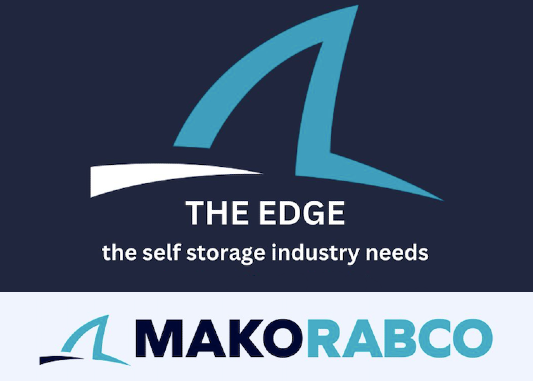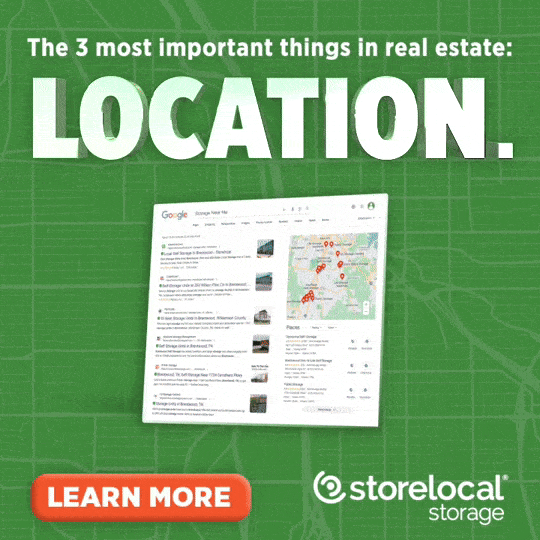Marketing Mistakes: 11 Promotional Pitfalls To avoid
Marketingis a necessary cost for any self-storage facility, whether it's a billboard or a full-blown media campaign. However, marketing mistaking are costs we all want to avoid. Several self-storage industry veterans have weighed to provide 11 of the biggest marketing mistakes to avoid.
1. Don’t Plan Over Budget
Stacie Maxwell, vice president of marketing for Universal Storage Group, and her team recommend starting with the basics. Sometimes the biggest marketing failures happen as a result of improper budgeting for a marketing campaign. “Budget for promotional items and collateral materials,” Maxwell urges. “Include enough money to order these items as many times as you need to replenish throughout the year based on the number of planned business visits and marketing activities.”Maurice Pogoda, president of Pogoda Companies, agrees on the importance of marketing materials in general. He recommends everything from coffee mugs and Frisbees to flashlights and lanyards. Basically, anything embellished with the company logo is money well spent.
Consider the potential cost savings of ordering in bulk. Now consider the cost of running out of marketing material mid-quarter (or mid-business trip). Maxwell reiterates, “Think ahead. If you are going to visit 40 businesses a month, then ordering only 250 of each marketing item in January will not make it to June.”
Bill Hipsher, CEO of Storage.com, says, “Don’t forget the distribution costs.” Even simpler things such as postage for direct mail are sometimes forgotten when determining the true costs of a campaign.
Sometimes our ideas are bigger than our pockets. The budget should include the manpower to facilitate a marketing event. “It costs money to have your managers running around promoting your business,” says Maxwell. “Be sure to include enough in your payroll budget to properly pay them!”
2. Don’t Let Emotions Destroy The Marketing Campaign
If marketing isn’t for you, consider hiring someone else for the task. Mishandling a marketing campaign by floundering it with a lackluster attitude isn’t worth a pinch of pennies. The cost of hiring a serious, dedicated professional is worth allocating resources if possible.Maxwell believes the marketing pitch can be driven solely by a passion for the trade. “If they can sense your passion for your product and the excitement behind your purpose for speaking with them, then they are more likely to think positively about your company. They are more inclined to do business with you,” she says.
Approach marketing with passion, but don’t let a love for dinosaurs and 80s music destroy the campaign. Aim the campaign at the target audience: the demographical sweet spot of people most likely to end up moving into the units.
3. Don’t Underestimate The Power Of Word Of Mouth
4. Don’t Overestimate The Power Of Social Media
Hipsher describes social media’s usefulness as “reputation management”. “Instead of connecting online, connect in the community,” Hipsher recommends. “Being a valuable member of your community can go a long way.” He suggests using social media as an opportunity to build a community with people who’ve had positive experiences.
5. Don’t Have Bland, Negative Banners
“When using banners to promote your store, choose large, bold, colorful fonts,” Pogoda says. The design of a promotional banner is just as important as the content itself. Hipsher also reminds everyone that drivers have a limited window to view content: Keep the message interesting and short.Sue Haviland of Haviland Storage Services mentions her standout pet peeve when it comes to marketing mistakes. “I cannot stand when I see paper, handwritten signs.”
Many long-time veterans share the same feeling about on-site promotional signs and banners. Self-respecting site managers should take pride in the property and in the quality of their marketing material.
Haviland described an unnamed self-storage company that owns and operates more than 35 different locations. They also didn’t follow Haviland’s mantra. On President’s Day, they forgot to have someone proofread a social media post, and thousands of people ended up seeing typos in the post. It gets worse, Haviland explains, when the typos impact dates and times of events. It’s basically as good as taking the marketing material—the company’s money—and throwing it right in the trash.
Above all else, the content needs to remain positive. “Eliminate all negative signage from your facilities,” says Pogoda. This is important for remaining positive, even in the face of neighboring competitors.
6. Don’t Bash The Competition
Maxwell is deeply against slandering the competition. “Instead of trash-talking, you have to find your key differentiators. What makes your facility the one to choose when someone needs storage?” Of course, today’s competition can be tomorrow’s business partner. The last thing a self-storage lifer wants to do is sacrifice their reputation for a handful of booked units. Maxwell concludes, “Point out the best in your facility rather than the worst in the others.”7. Don’t Be Afraid To Get Creative
8. Don’t Neglect the Website
“Do not allow your website to become stagnant. Always look at ways to improve it,” Pogoda says. An introductory or informational video about the company on the website can be a simple tweak for great results. After the site visitor has an opportunity to better acquaint themselves through the video, make certain they have other things to hold their interest.
Meanwhile, list unit prices and never advertise discounts without adding the phrase “certain restrictions apply.” Avoid using tracking phone numbers that may remain on the Internet for years, which Pogoda says can cause identity problems for the company. Lastly, he highly recommends utilizing qualified proofreaders for marketing materials—Internet and otherwise. “Do not approve a proof unless different sets of qualified eyes have looked at it to verify its accuracy.”
9. Don’t Forget About The Customer
Remember the customer wants to feel comfortable with where they keep their belongings. Maxwell is adamant about knowing the product, the facility, and the trade. Take down contact information for future follow-up and always follow up when offered. How often? Maxwell says, “Know the difference between persistent and annoying.” Above all else, make the interaction about the customer. Ask open-ended questions to engage the customer and be prepared to offer promotional material.10. Don’t Rely On One Marketing Channel For Business
11. Market For Tomorrow
_
Khris Golder is a freelance writer based in Phoenix, Arizona.
More Content
Popular Posts
Recent Posts
Senate Bill 709 (SB709) has many in the...
In January, self-storage industry veteran...
In April 1984, the first non-stop commercial...
Raise your hand if you’ve ever made plans,...
Everyone knows it: Investing in real estate...
They say when one door closes, another one...
Like its name implies, Surprise, Ariz., a...
Self-storage has become as reliant on the...











